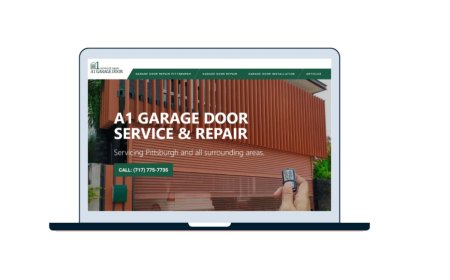Common Mold Myths and Facts Every Property Owner Should Know
In this guide, we separate the mold myths from facts to help every property owner protect their investment and family.

Introduction Why Understanding Mold Misconceptions Matters
When it comes to mold, misinformation is everywhere. These common myths not only mislead homeowners but also lead toexpensive repairs,missed health risks, andbad property decisions. In this guide, we separate themold myths from factsto help every property owner protect their investment and family.
Myth #1 If You Cant See Mold, Its Not There
Fact:Mold often growsbehind walls,under floors, or insideair ductsfar from sight. You may never see it until symptoms appear or damage becomes visible.
Myth #2 Bleach Kills All Mold Permanently
Fact:Bleachonly works on non-porous surfacesand doesnt eliminate mold roots. In fact, it maymake things worseby leaving moisture behind.
Myth #3 Mold Only Grows in Dirty Homes
Fact:Mold doesnt care about cleanliness. It only needsmoisture,organic material, andpoor airflowall of which can exist in even the cleanest homes.
Myth #4 Small Mold Spots Are Nothing to Worry About
Fact:Even a small patch can indicate alarger hidden colony. Mold spreads quickly and silently, and even minor infestations can triggerhealth issues.
Myth #5 Mold Is Always Visible or Smelly
Fact:Not all mold gives off odors or visible signs.Airborne sporescan circulate long before mold becomes detectable by sight or smell.
The Fact:Mold TestingIs the Only Reliable Way to Know
If you suspect moldor simply want peace of mindprofessional mold testingis the only way to confirm the presence, type, and severity of mold in your home.
Rick Bruce of Bay Area Mold Prosuses:
- Air sampling to detect invisible spores
- Surface testing for visible mold
- Lab analysis for accurate, unbiased results
Call (650) 762-6228 or visit bayareamoldpros.com
WhyProfessional Mold TestingIs Worth the Cost
For$595, you receive:
- Full home inspection
- Air and surface samples
- Lab-certified mold analysis
- Written report with expert recommendations
No upsells. No remediation. Just the facts.
FAQs Mold Misconceptions Every Buyer and Owner Should Clarify
Q1: Can new homes get mold too?
Yes. Mold can form during construction or due to poor ventilation.
Q2: Can I test mold with a home kit?
DIY kits often produce false positives and lack lab verification.
Q3: Are all molds dangerous?
Not all, but somelikeblack moldcan be toxic or allergenic.
Q4: Can I paint over mold?
No. Mold must be removed properly. Paint traps it and worsens the problem.
Q5: Ismold testingnecessary if theres no visible issue?
Yes. Airborne spores and hidden mold can still impact health and safety.
Transition to Next Section: Buying a Home? Check for Mold First
Before you finalize that dream home in the Bay Area, heres what you need to do.
Easy Ways to Check for Mold Before Buying a New Property
Introduction Why Mold Should Be on Your Pre-Purchase Checklist
Buying a home is a huge investmentbut mold can turn it into a financial nightmare. Here are some simple ways to spot mold early and avoid surprise repairs later.
Tip #1 Start With Your Senses
Use your eyes and nose:
- Look forstains, warping, or bubbling paint
- Smell for musty or earthy odors
- Feel for humid or damp areas(especially near baseboards and windows)
Tip #2 Inspect Key High-Risk Areas
Focus your checks on:
- Bathrooms(under sinks, behind toilets)
- Basements and crawlspaces
- Attics and rooflines
- HVAC vents and filters
These are prime areas for hidden mold.
Tip #3 Check For Water Damage and Poor Ventilation
Look for:
- Watermarks or ceiling stains
- Peeling paint or soft drywall
- Signs of poor airflow, such asexcess condensation
These indicators suggest mold-friendly environments.
Tip #4 Ask for Disclosure and Past Mold Reports
California law requires sellers to disclose known mold issues. Ask for documentationif its missing, request a fresh inspection.
Tip #5 Consider a ProfessionalMold InspectionBefore Closing
Mold issues can cost thousands. A $595 inspection from Bay Area Mold Pros includes:
- Air and surface sampling
- Lab-certified mold testing
- A detailed, written report
- No hidden fees, no sales pressure
Book at (650) 762-6228 or visit bayareamoldpros.com
What to Expect From a Pre-PurchaseMold Inspection With Rick Bruce
- Visual scanof moisture-prone zones
- Air quality samplingacross multiple rooms
- Surface testingwhere visible mold may be present
- Lab resultswith spore counts and mold types
- Written recommendationsfor safe buying decisions
Final Tips Protecting Your Investment From Hidden Mold
Even if the home looks spotless, mold may still be present. Always test:
- Afterremodelingor fresh paint
- Inolder homeswith past leaks
- Inlow-ventilation homesor properties near water
FAQs Mold Concerns When Buying Property
Q1: Ismold testingrequired during home inspections?
No, but its highly recommended.
Q2: Can mold be a deal breaker?
Yesespecially if its toxic, widespread, or improperly disclosed.
Q3: Should I back out if mold is found?
Not necessarily. A professional report helps you negotiate repair costs or require remediation before closing.
Schedule Your Buyers Mold Test With Bay Area Mold Pros Today
Ensure your dream home is a healthy investment.
Call Rick Bruce at (650) 762-6228
bayareamoldpros.com
Flat Rate: $595 No upselling, just honest inspection and expert insights
Conclusion Know Before You Buy:Mold Awareness Saves Time and Money
Understanding the facts about moldand takingpre-purchase precautionsensures your new home is safe, sound, and worth every penny. Work with a trusted professional likeRick Bruce at Bay Area Mold Prosto get the clear answers you needbefore mold becomes a costly mistake.




































